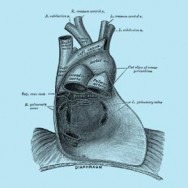
Aortic Root Replacement (Bentall’s Procedure)
Background
The aortic root is the section of the aorta (the large artery leaving the heart) that is attached to the heart. The aortic root includes the annulus (tough, fibrous ring); the leaflets of the aortic valve; and the openings where the coronary arteries attach (coronary ostia).
An aneurysm is an abnormal bulge in the wall of a blood vessel. In some patients, an aneurysm can occur in the aortic root, causing it to dilate or widen. Without treatment, a life-threatening condition called aneurysm dissection can occur. In this condition, blood flows through a tear in the inner layer of the aorta, causing the layers to separate. Blood flow becomes interrupted and causes the arterial wall to burst.
About the surgery
Aortic root replacement with a composite valve-graft is a surgical treatment for aortic root aneurysms with a diseased aortic valve. It involves replacement of the root and aortic valve with a graft and either a biological or mechanical valve prosthesis. The choice between a biological or mechanical valve is complex, and patients should discuss this with their surgeon. Mechanical valves are very durable, however they require life long blood thinners (e.g. warfarin) which increase the risk of bleeding and need regular monitoring. Biological valves do not require blood thinners, but do not last as long as mechanical valves (on average 15-20 years) and may require another operation after this.
This procedure is performed under general anaesthesia, and with the heart temporarily stopped using cardiopulmonary bypass. First the aorta is cut and the diseased portion is removed, including the aortic valve. The coronary arteries (blood vessels that supply oxygen-rich blood to the heart muscle) are disconnected. A graft with a valve inside it is then sewn to the heart and to the other side of the aorta. Two small holes are made in the graft, and the coronary arteries are then re-connected through them.
Recovery period
Patients usually stay in the intensive care unit for 1 – 2 days for monitoring, and then in the nursing unit for 4 – 5 days. Two to three tubes stay in the chest to drain fluid from around the heart, which are usually removed 1 – 3 days after the surgery. Full recovery usually takes about 2 months. Most patients are able to drive in about 3 to 8 weeks after surgery. Your surgeon will provide specific guidelines for your recovery and return to work.
Risks of the surgery
As with all surgery, aortic root replacement with a composite valve-graft is associated with some risks. In the short term after the operation these include wound infection, bleeding, kidney injury, stroke, heart attack, arrhythmias and pacemaker implantation, and possibly death. In the long term the artificial valve may fail or the graft may dilate and aneurysm, and another operation may be required to replace them.
All patients should consult their cardiothoracic surgeon for specific information about their medical condition and surgery.


